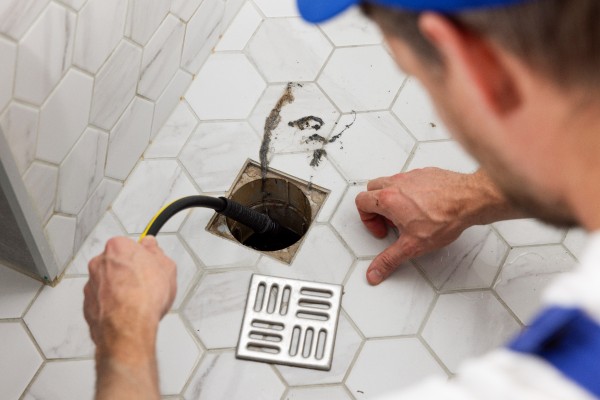50 shades of green

Plumbers sit at the forefront of habitable wellness. Eddie Bocchino explores how the industry can provide proactive measures for hygiene, insurance and common sense.
Commercial and residential buildings are increasingly facing issues tied to indoor air quality (IAQ), sick building syndrome (SBS) and overall tenant wellness.
Too often, the industry hygiene and facility maintenance takes a reactive approach by patching symptoms like odours, pests and mould rather than addressing the water-based sources of these problems.
This reactive mindset not only increases costs for remediation and possible litigation but also erodes trust between developers, tenants, and insurers.
Hygiene teams, facility managers and cleaning companies often find themselves patching over recurring problems rather than solving their root cause. Sewer gas ingress, biofilm growth, stagnant water and drain pests are water-based issues that stem directly from how drainage and plumbing systems are designed and maintained.
Yet the plumbing and building sectors typically prioritise codes, specifications and cost-cutting, aiming only to pass inspections and improve ROI. This ‘bare minimum’ approach leaves buildings vulnerable to expensive defects, dissatisfied tenants and insurance disputes.
Plumbers and design consultants focus on underground mechanics, pipe design, flow rates and codes, whilst those responsible for cleaning, pest and spatial hygiene focus on above the ground, but only when they can see it. Both are heavily influenced by each other’s treatments of the reactions.
The insurance and litigation impact
Water damage remains the most common and costly building defect. Engineers Australia reported that water leaks account for 80-90% of all defects, costing up to A$3 billion annually in rectification works.
In NSW, the Strata Community Association reported that 53% of strata buildings suffered serious defects, with rectification costs averaging A$283,000 per building.
Insurance claims tied to plumbing failures include water damage, mould remediation and pest-related infestations. These claims are complex, costing insurers and developers heavily. Average construction-defect litigation can cost upwards of A$200,000-400,000, depending on the scale, according to Advocate Magazine.
The link to SBS
The World Health Organisation (WHO) estimates that up to 30% of new and renovated buildings worldwide suffer complaints related to indoor air quality. Symptoms of SBS include headaches, eye/throat irritation, fatigue and difficulty concentrating. Common causes include poor ventilation, moisture intrusion, biofilm and sewer gas ingress, all conditions directly linked to plumbing design and maintenance.
IAQ and floor waste leakage
Floor wastes are a common but often overlooked pathway for contaminants to enter indoor spaces. When these drains dry out or develop leaks, the water trap seal that normally prevents backflow is lost. Without that barrier, sewer gases such as hydrogen sulphide, methane and ammonia, along with volatile organic compounds (VOCs), can easily escape into occupied rooms.
These gases are not only unpleasant but also harmful to human health, contributing significantly to poor IAQ. The Environmental Protection Agency has long identified poor ventilation and chemical contaminants as leading causes of SBS, with sewer gas intrusion playing a direct role in many cases.
Moisture is another critical concern when it comes to compromised floor wastes. A leaking drain doesn’t always cause obvious flooding, but it can create hidden dampness in subfloor areas. Over time, this persistent moisture fosters microbial growth, including mould, bacteria and biofilm. These organisms release spores and microbial VOCs into the air, which are strongly associated with IAQ-related health complaints such as headaches, respiratory irritation and fatigue.
The WHO reported as far back as 1984 that up to 30% of new or renovated buildings experience IAQ-related complaints, with moisture issues consistently cited as a primary driver.
Floor wastes also create an easy pathway for pests when left open or leaking. Cockroaches, flies and drain gnats thrive in these environments, and their presence further undermines IAQ. Not only do these pests introduce allergens, bacteria and organic debris into the air, but they also often lead to the use of chemical pest-control measures. Ironically, these reactive treatments can release additional pollutants indoors, compounding the IAQ problem.
The implications are particularly serious in commercial buildings. In hotels and venues, guests are quick to notice unpleasant odours or poor air quality, which can translate directly into reputational damage and reduced occupancy. In healthcare and aged care facilities, contaminated air from drains poses an even higher risk by potentially carrying airborne pathogens, thereby increasing the chances of hospital-acquired infections. Offices and shopping centres are not immune either, with poor IAQ contributing to staff sickness, absenteeism and reduced productivity.
Residential buildings also face significant challenges. In apartment complexes, interconnected stacks and poorly maintained traps mean that a single dry floor waste can compromise air quality for multiple tenants.
How Green Drain mitigates these issues
- Creates a one-way valve barrier: Stops gases, pests and contaminants without needing water seal maintenance.
- Reduces water wastage: Eliminates the need to recharge traps with buckets of water.
- Supports sustainable IAQ management: Prevents chemical use for pest/odour control, aligning with WELL Building Standard and Green Star requirements.
- Prevents hidden leakage: Avoids moisture buildup that drives mould and microbial growth.
In short, floor wastes are one of the weakest points in a building’s IAQ defence system. When not properly sealed or maintained, they contribute directly to SBS, insurance claims (water damage/mould) and tenant dissatisfaction. Green Drain acts as a simple, preventative solution.
Long-term value vs. short-term patching
Reactive measures may temporarily address odours, pests or water damage, but they fail to resolve the source. Every dollar spent on remediation, litigation and chemical treatments is a dollar lost in trust, tenant wellness and sustainability. Conversely, installing Green Drains helps shift the industry from reactive patching to proactive prevention, building healthier environments, reducing legal exposure and improving long-term ROI.
Conclusion
It’s time for the construction and plumbing industries to rethink short-term cost savings. By integrating preventative solutions like Green Drain, developers and property managers can mitigate litigation risk, lower insurance claims, improve occupant wellness and reduce environmental impact. This is not just about compliance; it’s about building trust and delivering sustainable value.
